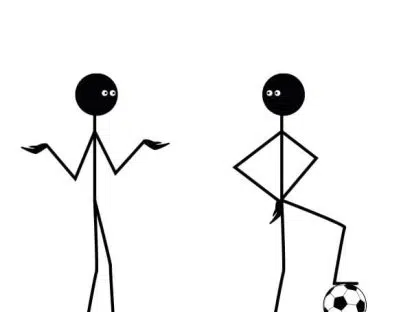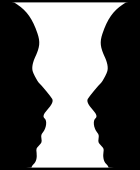In our previous article, we discussed a statement made by the President of the European Commission, Ursula von der Leyen: “The access to vaccines for low- and middle-income countries is […] as much about our own interest as it is about solidarity” (1). While the combination of interest and solidarity as reasons for action seems at first sight to be incompatible, we have argued that these two reasons can be combined. However, the initial impression of incompatibility deserves to be explored. We do so here with reference to François de La Rochefoucauld, on one of whose maxims we comment.
1.
The Duc de La Rochefoucauld (1613-1680) is considered to have been a pessimistic moralist, at least in appearance. He saw human motivations as stemming from egoism, or rather, as the term of the time was used, from self-love (amour de soi) – that instinctive impulse, that “love of oneself, and of all things for the sake of oneself” (2). Self-love figures so prominently in his moral maxims and reflections that, for Will Moore, La Rochefoucauld is said “to have seen in self-love what determines our virtues as well as our vices” (3).
But self-love operates in diverse, complex and mysterious ways:
“It is opposites of all kinds: it is domineering and submissive, sincere and deceitful, compassionate and cruel, timid and daring” (maxim 563).
The virtues themselves do not escape his influence: they “lose themselves in self-interest, as rivers do in the sea” (maxim 171), interest being understood as self-interest.
La Rochefoucauld’s pessimism is not only about the practical effectiveness of moral virtues. It also expresses the idea, which we have just discussed in relation to self-love, that our motives are often hidden from us:
“We are very far from knowing all our wishes” (maxim 295).
A consequence of this statement is that we sometimes believe, in good faith, that the motive for some of our actions is genuinely moral. We believe in the existence of our virtues and think that they determine our actions (4). In truth, this may be the case, but La Rochefoucauld argues that it is difficult, if not impossible, to be sure. As Moore puts it:
“The beauty of it is that you never know. In any given case, the woman may be chaste by chastity. Integrity may be cleverness, or it may be integrity.”
2.
Let’s look at this last sentence. It evokes La Rochefoucauld’s maxim 170:
“It is hard to judge whether a straightforward, sincere, honorable deed has resulted from integrity or cleverness.”
This maxim can shed light (in a pessimistic light) on Ursula von der Leyen’s phrase about interest and solidarity. If, in maxim 170, we replace, for the sake of the argument, “straightforward, sincere, honorable deed” with the European Commission’s contribution to the COVAX mechanism, integrity with solidarity, and interest with cleverness, we find the issue we are discussing in this article.
It is important to note that maxim 170 does not assert that every moral action – every “straightforward, sincere, honorable deed” – is motivated by cleverness, which is one of the expressions of self-interest. As Michael Moriarty puts it:
“The maxim certainly juxtaposes two possible explanations for intrinsically praiseworthy behaviour: an underlying virtue of probity or integrity and an intellectual quality of cleverness in handling practical matters (most probably involving the management of the agent’s interests).” (5)
But the maxim does not exclude cleverness from being the source of moral action. As such, it casts doubt on its motives. Although witnessing a moral action, an observer can still redescribe the motives of that action by invoking cleverness.
3.
If one were to stick to this sceptical interpretation, Ursula von der Leyen’s sentence could be considered with mixed judgment. Is interest not the only motive for the European Commission’s initiative?
There are, however, two ways of reversing this judgment.
First, maxim 170, like many of La Rochefoucauld’s maxims, calls for a lucid examination of the motives for our actions. Although lucidity can be the plaything of self-love – for self-love uses cunning and concealment – it encourages an introspective search concerning our motives for action, and this search can subject lucidity itself to scrutiny.
Secondly, maxim 170 assumes that we possess the concepts of sincerity and integrity. Otherwise, we cannot understand its meaning and scope.
More generally, if we understand it, if we can attribute a moral value to it, it is because we know what an authentic moral virtue is. André Comte-Sponville makes this argument about the sincerity contained in maxim 170 (6). He distinguishes between “authentic sincerity and that which is merely the result of a calculation,” and immediately adds:
“The former is the exception, but it is the exception, in matters of ethics, that takes the place of the rule.”
In Ursula von der Leyen’s statement, solidarity can be seen as expressing not an appearance of solidarity, but genuine solidarity. The fact that interest is mentioned just before solidarity adds further justification to this interpretation.
Finally, the voluntary association between interest and solidarity expresses in itself a form of sincerity. It lucidly expresses the dual nature of the European Commission’s motives in this case.
Alain Anquetil
(1) “Speech by President von der Leyen at the European Parliament Plenary on the state of play of the EU’s COVID-19 Vaccination Strategy,” 10 February 2021.
(2) F. de la Rochefoucauld, Collected maxims and other reflections, translated with an introduction and notes by E. H. Blackmore, A. M. Blackmore, and Francine Giguère, Oxford University Press, 2007.
(3) W. G. Moore, “La Rochefoucauld and the Mystery of Life,” Cahiers de l’Association internationale des études françaises, 1966, 18, pp. 105-111.
(4) I draw on Michael Moriarty, Disguised vices: Theories of virtue in early modern French thought, Oxford University Press, 2011.
(5) Ibid.
(6) A. Comte-Sponville, “Du rigorisme de la vertu au réalisme de l’honnêteté (Grandeur et limites de La Rochefoucauld),” Dix-septième siècle, 267(2), 2015, pp. 201-216.





